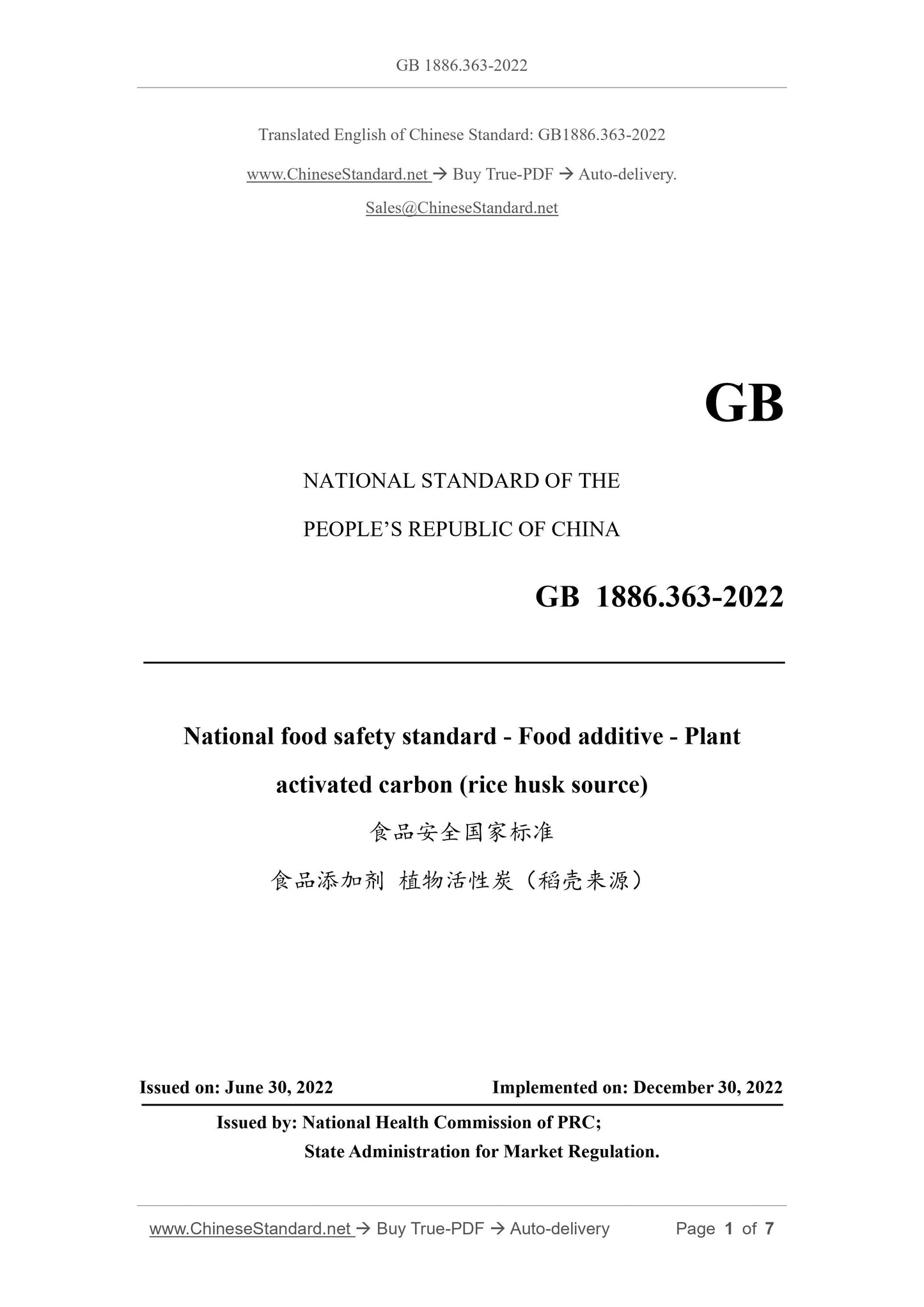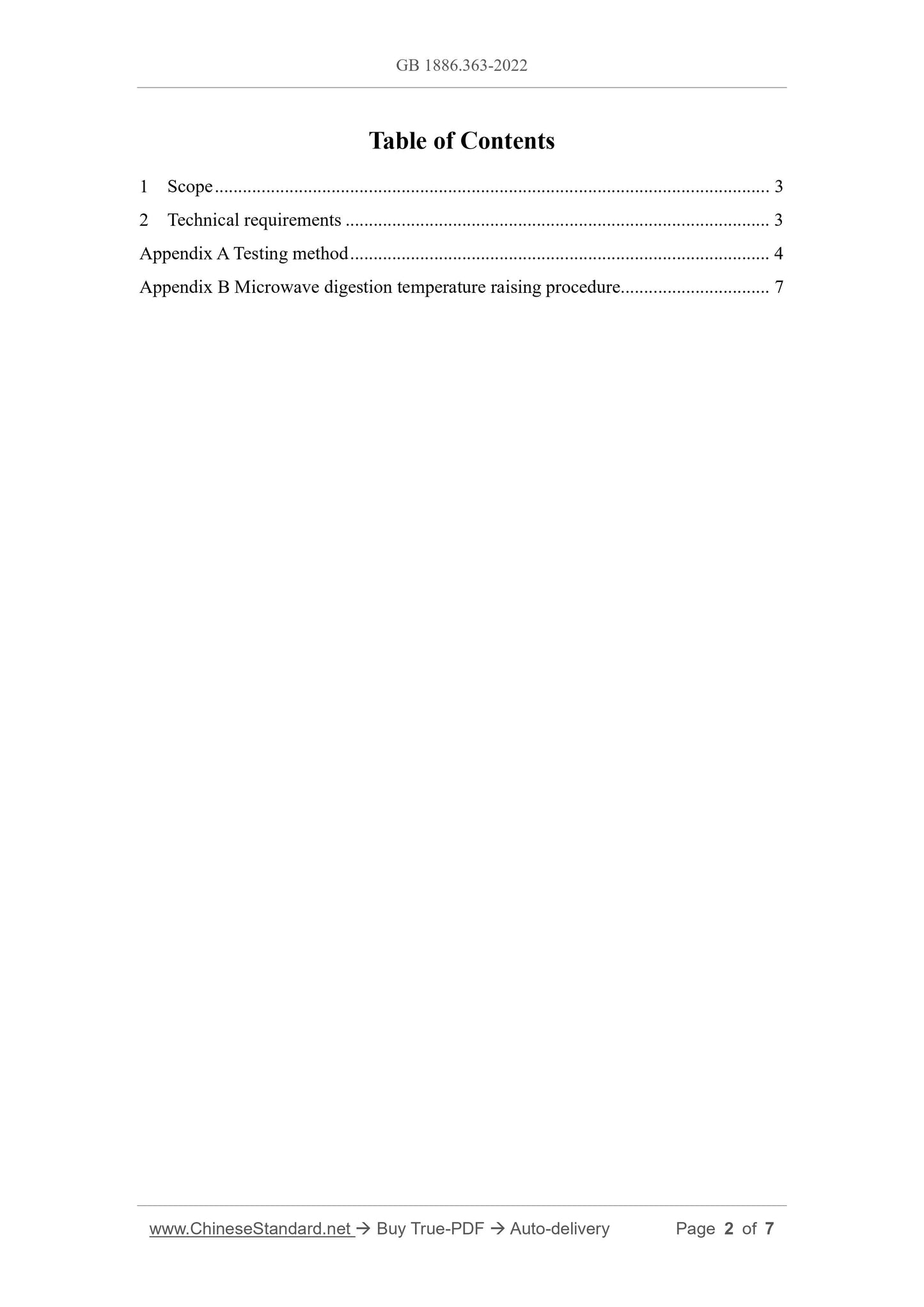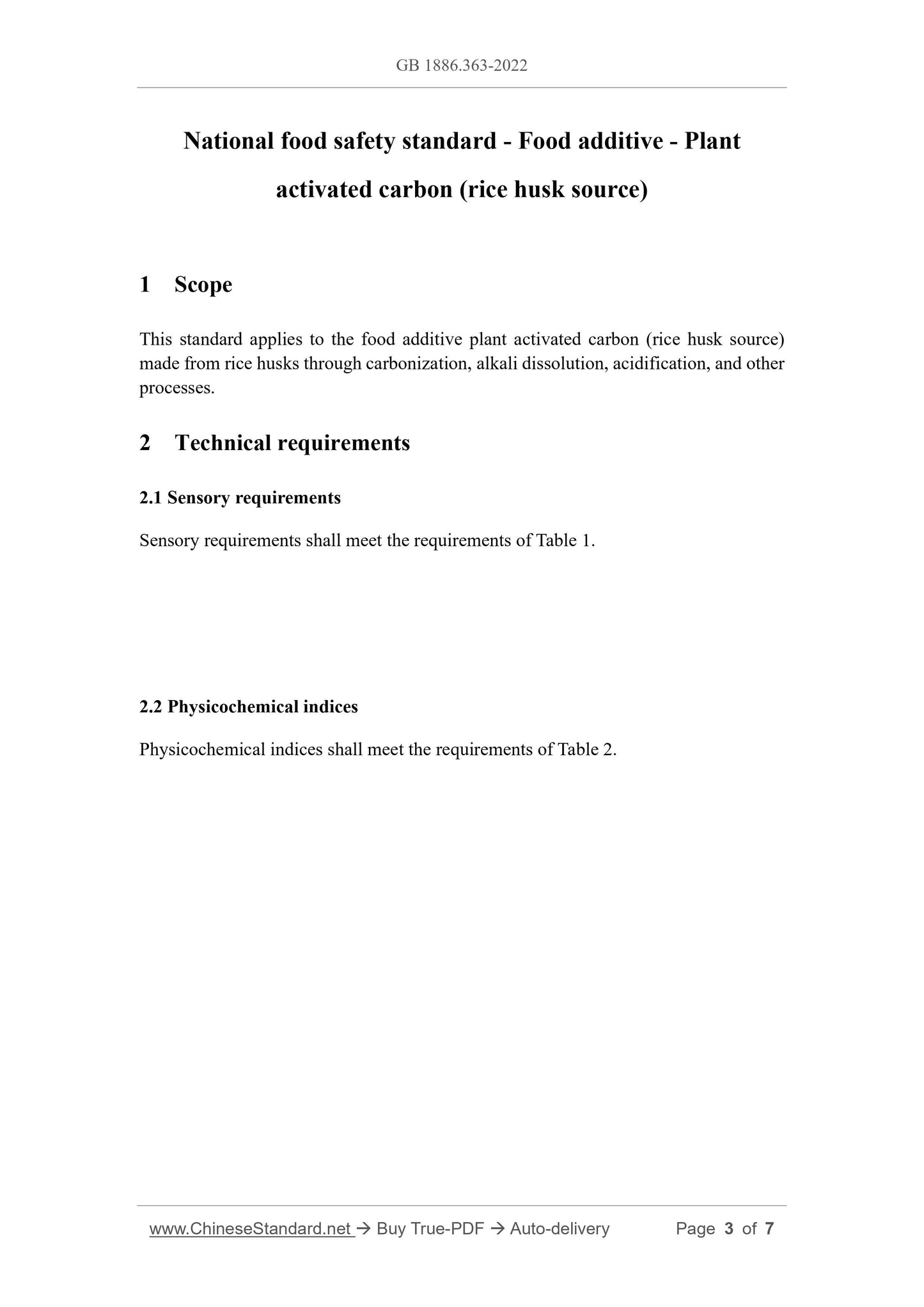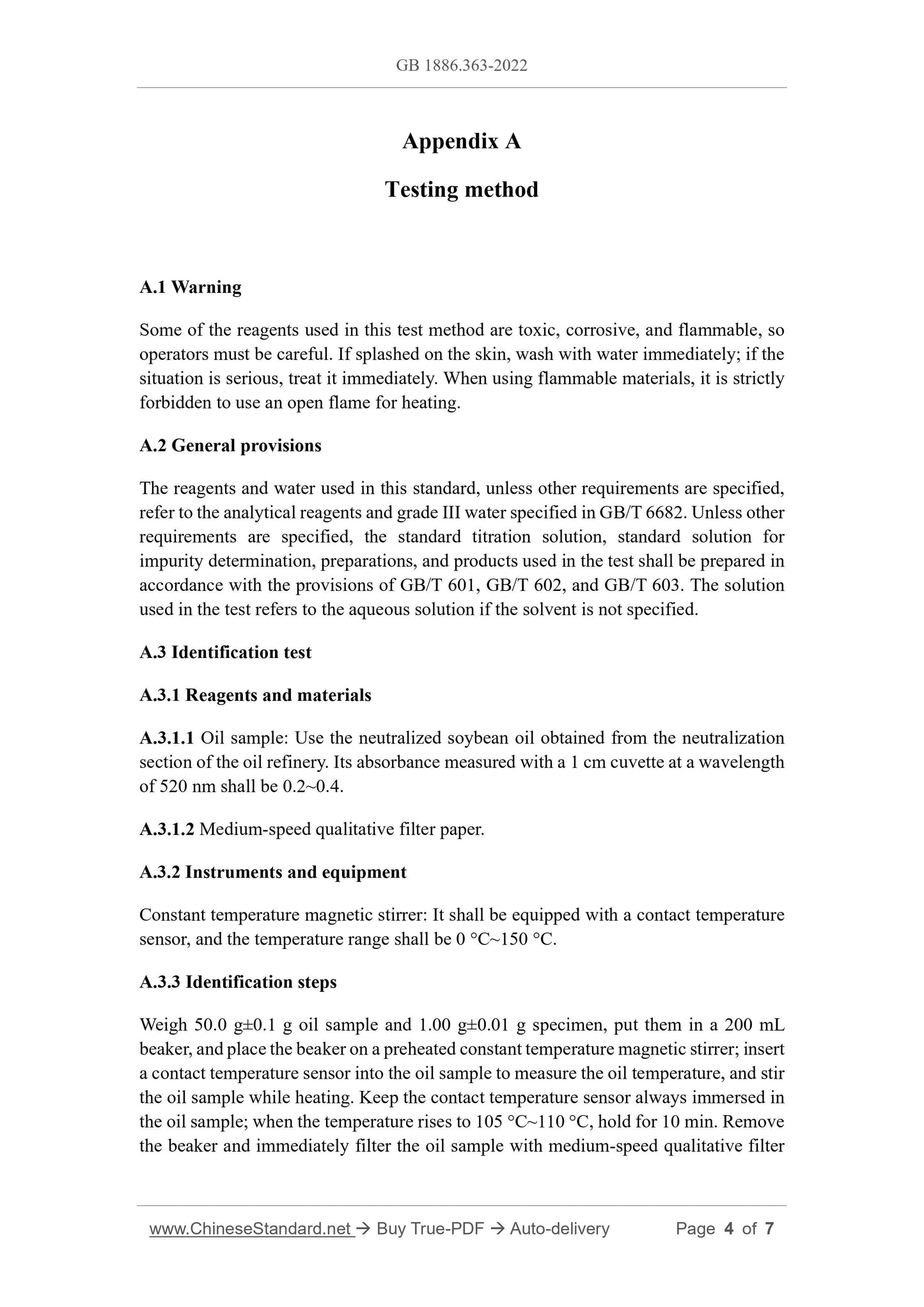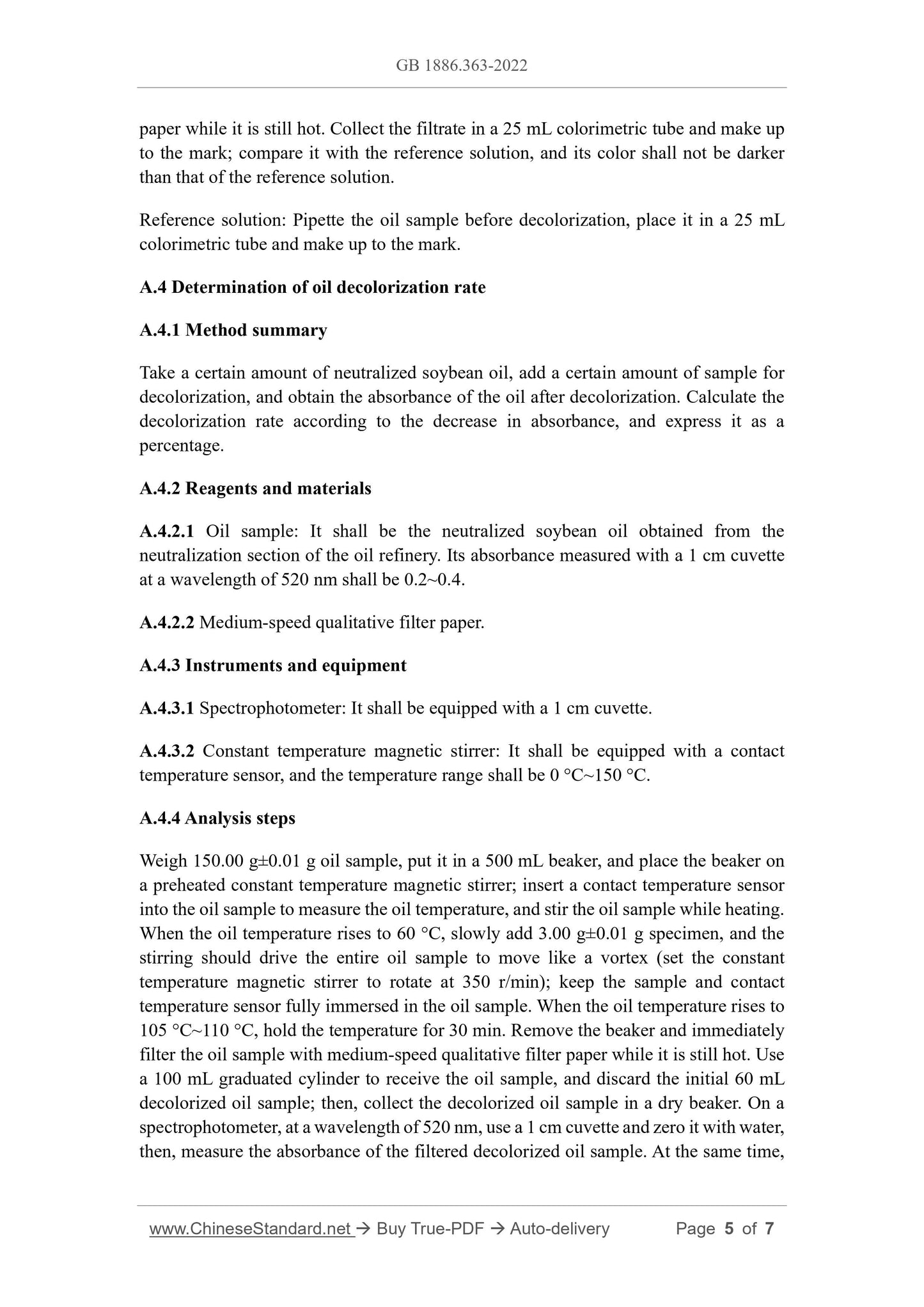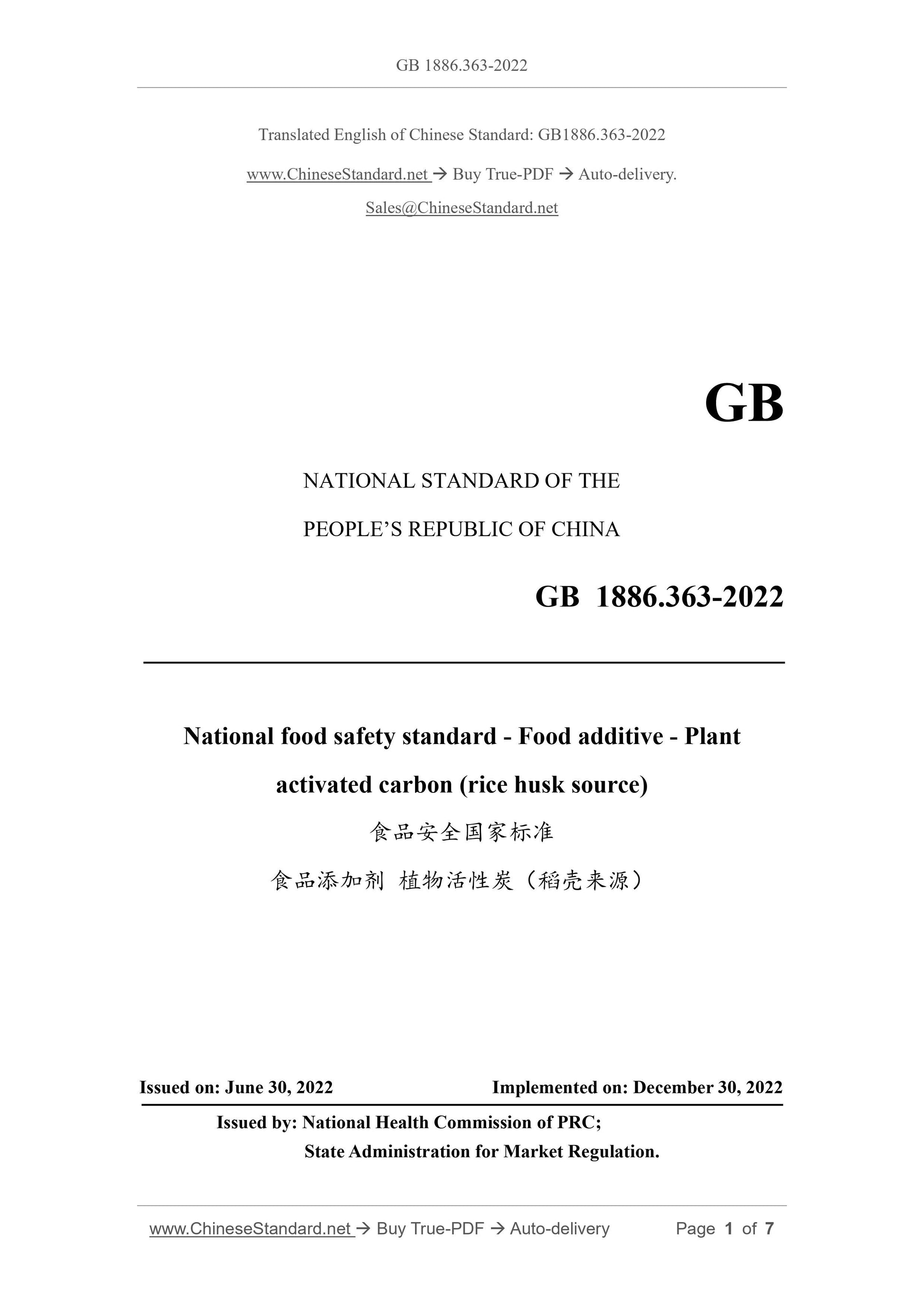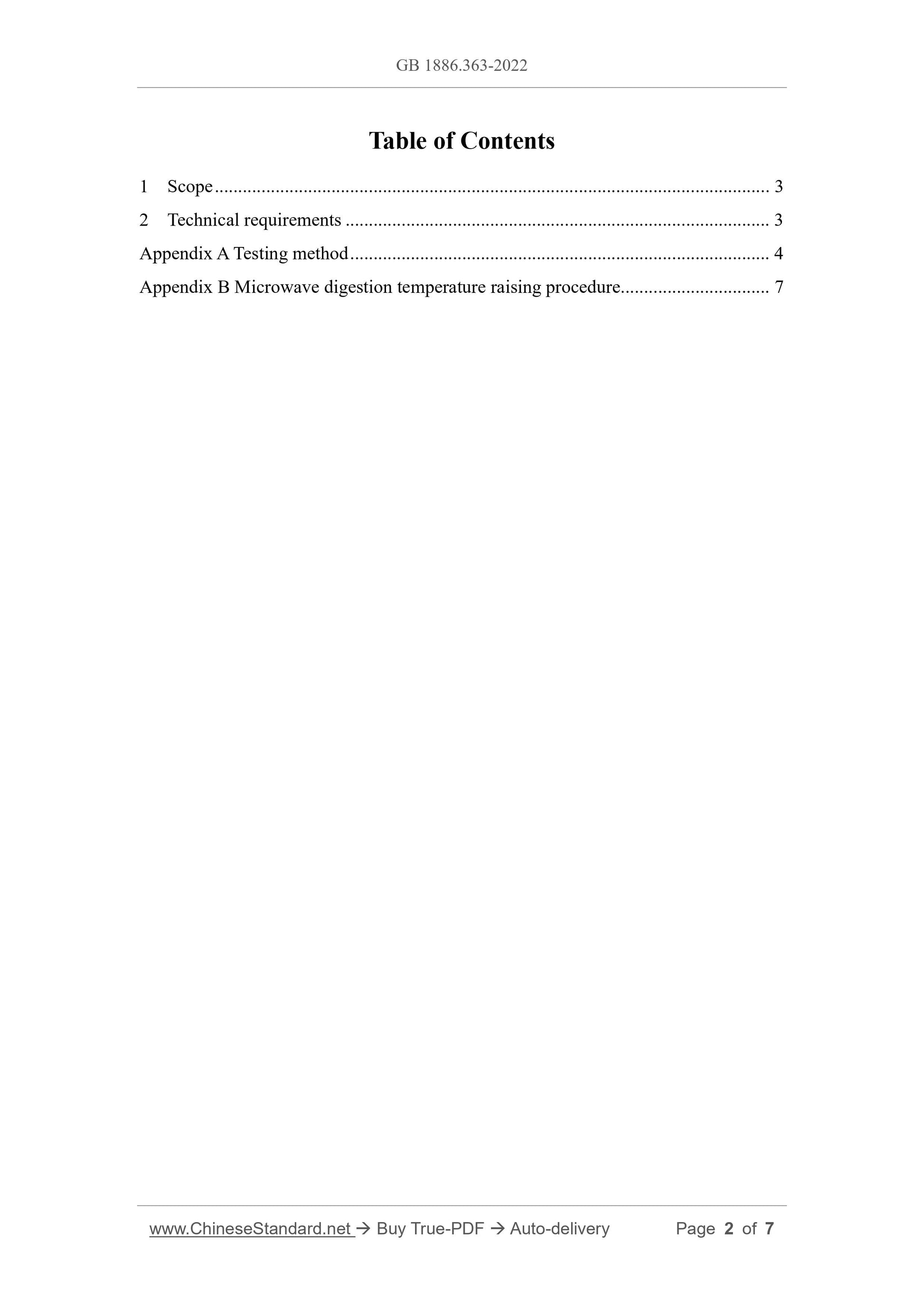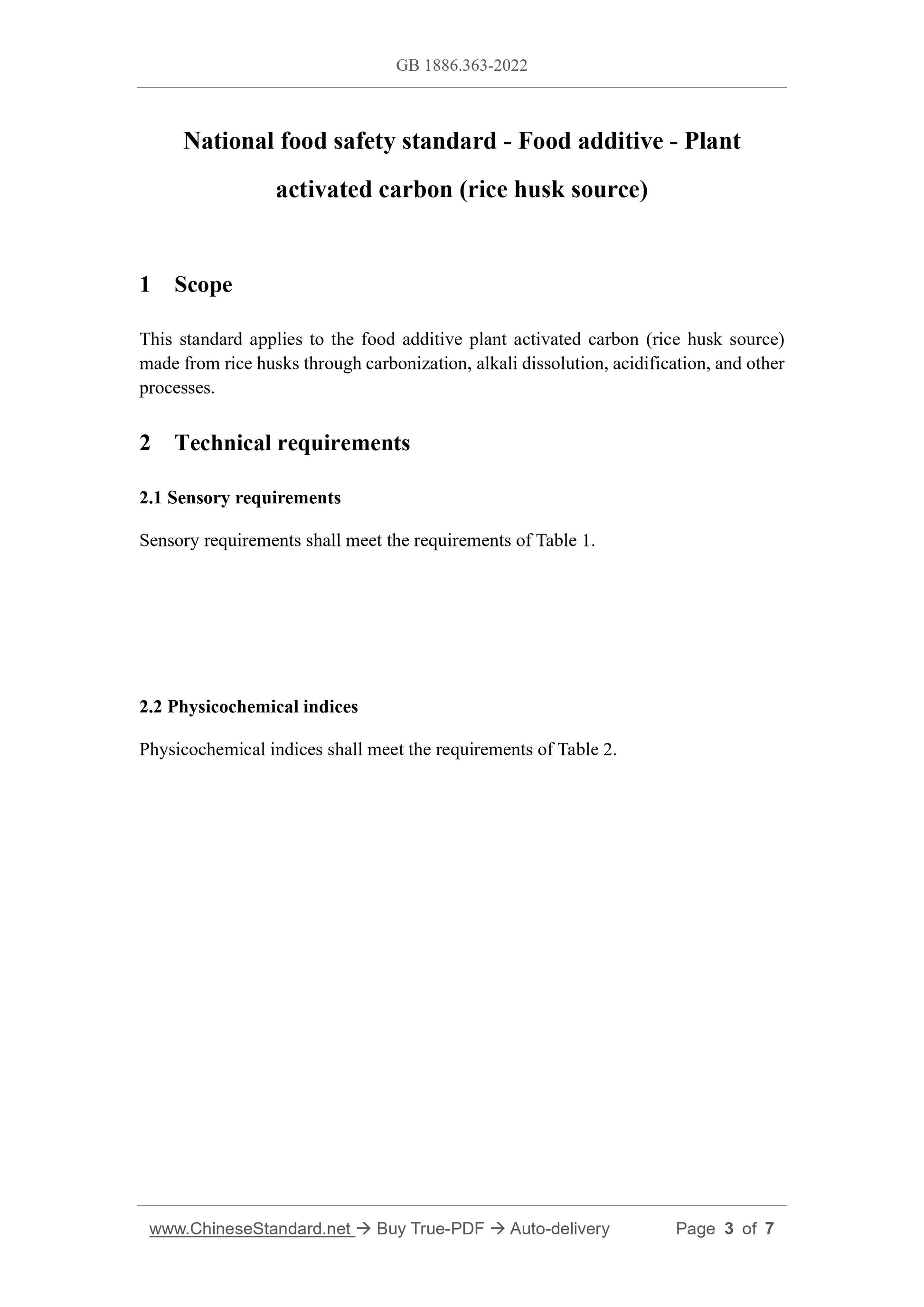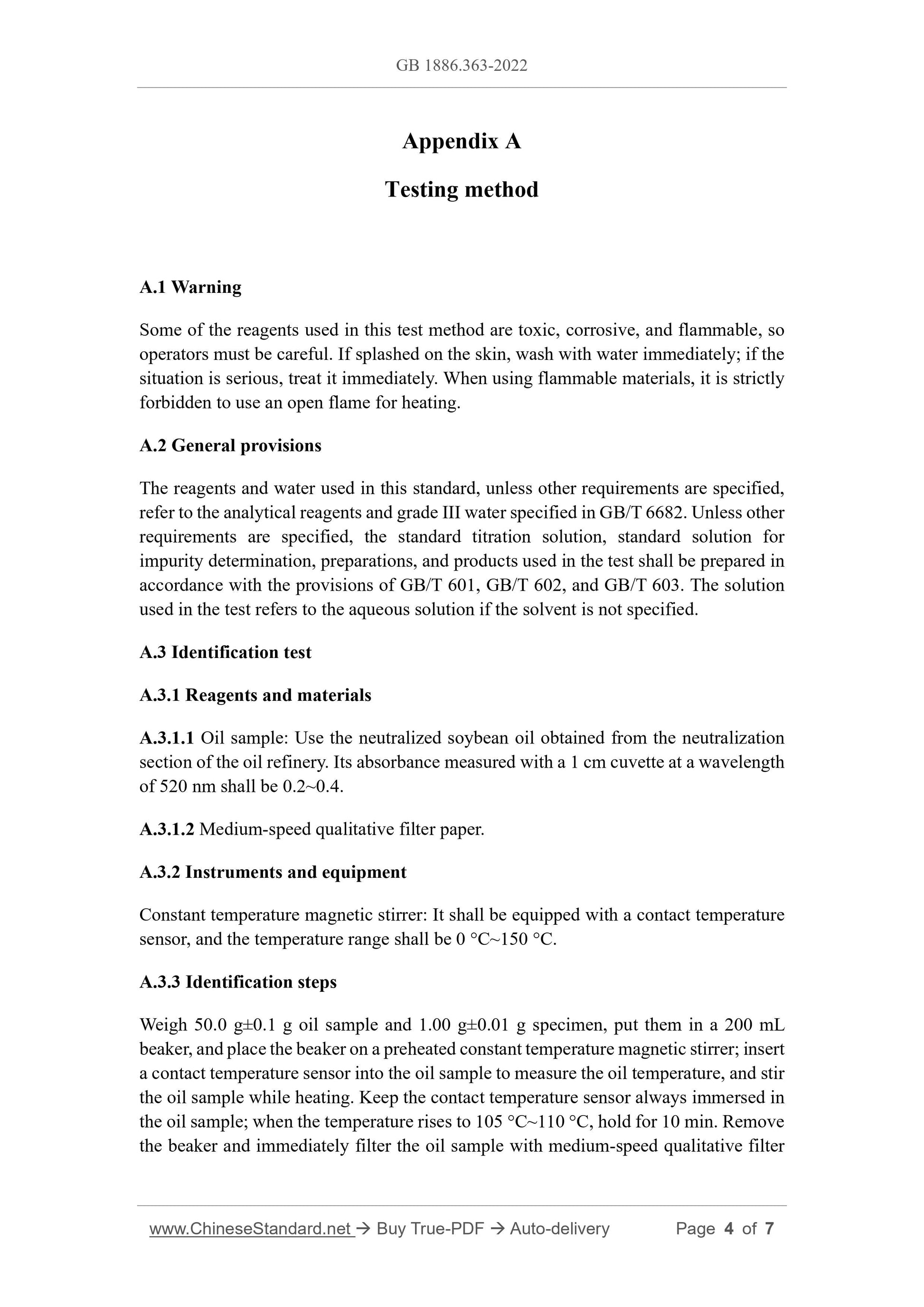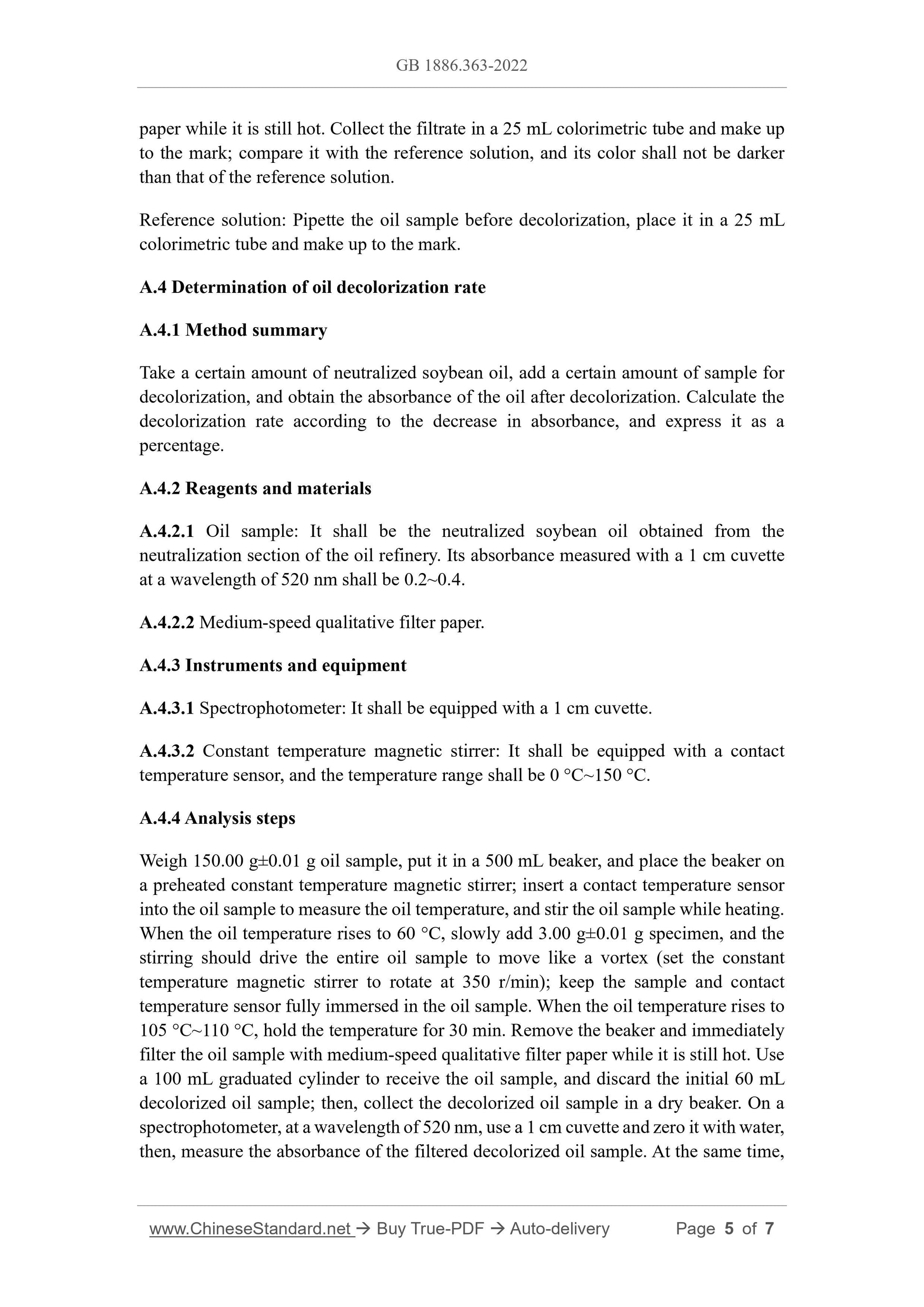1
/
of
5
www.ChineseStandard.us -- Field Test Asia Pte. Ltd.
GB 1886.363-2022 English PDF
GB 1886.363-2022 English PDF
Regular price
$110.00
Regular price
Sale price
$110.00
Unit price
/
per
Shipping calculated at checkout.
Couldn't load pickup availability
GB 1886.363-2022: National food safety standard - Food additive - Plant activated carbon (Rice husk activated carbon)
Delivery: 9 seconds. Download (and Email) true-PDF + Invoice.Get Quotation: Click GB 1886.363-2022 (Self-service in 1-minute)
Newer / historical versions: GB 1886.363-2022
Preview True-PDF
Scope
This standard applies to the food additive plant activated carbon (rice husk source)made from rice husks through carbonization, alkali dissolution, acidification, and other
processes.
Basic Data
| Standard ID | GB 1886.363-2022 (GB1886.363-2022) |
| Description (Translated English) | National food safety standard - Food additive - Plant activated carbon (Rice husk activated carbon) |
| Sector / Industry | National Standard |
| Classification of Chinese Standard | X09 |
| Word Count Estimation | 6,610 |
| Issuing agency(ies) | National Health Commission of the People's Republic of China, State Administration for Market Regulation |
Share
